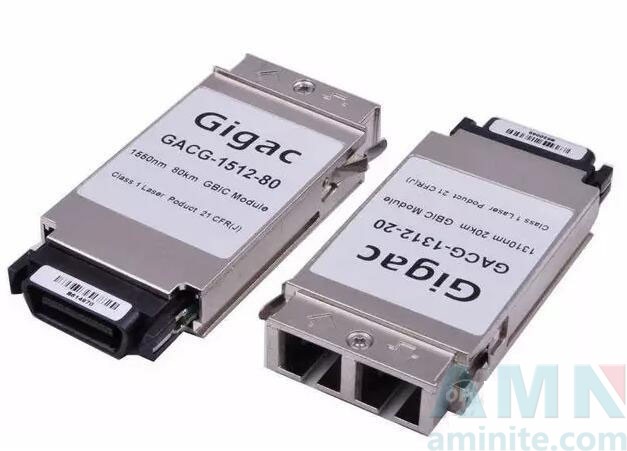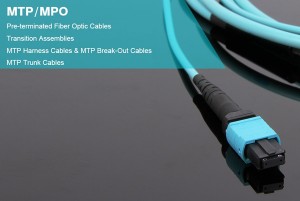The network share Optical fiber , Optical module Optical interface and common knowledge, and they hope to help everyone.
Ethernet The switch of commonly used optical module SFP,GBIC, XFP, XENPAK.
The full name of English:
SFP:Small Form-factor Pluggabletransceiver, a small package pluggable transceiver
GBIC:GigaBit Interface Converter, Gigabit Ethernet interface converter
XFP:10-Gigabit small Form-factorPluggable transceiver Gigabit Ethernet interface
Small form factor pluggable transceiver
XENPAK:10 Gigabit EtherNet TransceiverPAcKage Gigabit Ethernet interface transceiver package set
Optical fiber connector
Optical fiber connector plug by fiber and fiber ends, plug by locking pin structure and peripheral components. According to the different locking mechanism, optical fiber connector can be divided into FC type, SC type, LC type, ST type and KT Type RJ.
FC connector with screw locking mechanism was invented earlier, using an optical fiber connector is the most.
SC is a rectangular joint, by NTT The development, no thread connection can be directly plugged, compared with the FC connector has a small operating space, easy to use. The low-end Ethernet products are very common.
LC is a SC connector for Mini type LUCENT which has a smaller volume, has been widely used in the system, is a direction of the future development of optical fiber connector. The low-end Ethernet products are very common.
The ST connector is developed by AT&T company, with a bayonet locking mechanism, main parameters and FC and SC connectors, but are not common in company application, usually by connecting in a multimode device, and use more equipment from other manufacturers docking.
The KTRJ pin is plastic, through needle positioning, with the increase of the number of plug, the mating surface wear will occur as the long-term stability of ceramic ferrule connector.
Optical knowledge
Is the optical fiber light transmission conductor. From the optical fiber Optical transmission The model can be divided into single-mode fiber and multimode fiber.
There is only one fundamental mode of transmission of light in single-mode fiber, that is light only along the inner core optical fiber transmission. Due to completely avoid the mode dispersion makes the transmission bandwidth of single-mode fiber and a wide application and high speed, long distance optical fiber communication.
In multimode fiber optical transmission has a plurality of patterns, due to dispersion or aberration, the transmission performance of the optical fiber is poor, narrow band, transmission rate is smaller, shorter distance.
The characteristic parameters of optical fiber
The structure of the optical fiber prefabricated quartz fiber rod drawn, communication with the multimode fiber and single-mode fiber diameter is 125 M.
This is divided into two regions: the core and cladding (Core) (Cladding layer). Single mode fiber core diameter of 8~10 m, the multimode fiber core diameter has two sizes, core diameter of 62.5 m (American Standard) and 50 m (European standard).
Interface optical fiber specifications is described as: 62.5 m/125 m 62.5 m multimode fiber, which means that the fiber core diameter, 125 m refers to the outer diameter of the optical fiber.
The use of single mode optical fiber wavelength 1310nm or 1550 nm.
The use of multimode fiber optical wavelength is 850 nm.
From the color can distinguish between single-mode fiber and multimode fiber. Single mode fiber multimode fiber outside the body is yellow, orange red body.
Gigabit port
Can two gigabit optical port auto negotiation mode in the work of compulsory and. Support 1000M 802.3 gigabit optical access rate specification, support full duplex (Full) and half duplex (Half) two duplex mode.
The difference between self negotiation and force the most fundamental is to establish both the physical link to send the stream, auto negotiation mode to send the /C/ code, which is configured (Configuration) stream, and send the mandatory mode is /I/ code, which is idle stream.
Since the negotiation process of gigabit optical access
First, both ends are set to auto negotiation mode
The two sides send each other /C/ stream, if received 3 consecutive identical /C/ code and the received stream and the end of the work to match the way, return to each other with a Ack response to /C/ code, receives the Ack information, that they can communicate, set the port to the UP state
Two, is set to auto negotiation, is set to compulsory
Auto negotiation end to send the /C/ stream, forced end to send the /I/ stream, unable to provide the forced end end to end the negotiation information, nor to return the Ack response to the end, since the end of the DOWN negotiations. But the mandatory end can identify /C/ code, to the end that is matched with their own ports, so directly set the end port for UP state
Three, both ends are set to the mandatory mode
The two sides send each other end to receive /I/ stream into /I/ stream, that the end is matched with their own ports, set the port to the UP state directly
Optical fiber How does it work?
Optical fiber coated by plastic protective layer as thin as hair Glass Wire. Glass fiber essentially consists of two parts: the core diameter of 9 to 62.5 m, with a diameter of low refractive index glass materials 125 M. Although according to the materials used and different sizes and some other kinds of fiber, but here is that several of the most common. The light in the core part of the optical fiber to the total internal reflection mode of transmission, also refers to the light into one end of the optical fiber, the core layer and the interface between the cladding and bounces back and forth, transmitted to the other end of the fiber. The core diameter is 62.5 m, the cladding diameter fiber 125 m called 62.5/125 m light.
The difference between multimode and single mode fiber?
Multimode:
Can spread to hundreds of thousands of fiber mode, called multimode fiber (MM). According to the refractive index in the radial distribution of core and cladding, and can be divided into step gradient multimode fiber and multimode fiber. Multimode fiber size of almost all the 50/125 m or 62.5/125 m, and the bandwidth (information transmission fiber) is usually from 200MHz to 2GHz. Multimode optical transmission machine can be up to 5 km by multimode fiber. Using a light emitting diode or laser source.
Single mode:
Only a mode of propagation of optical fiber called single-mode fiber. Standard single-mode fiber (SM) refractive index distribution and step type optical fiber is similar to that of the core diameter is much smaller than multimode fiber.
Single mode fiber size is 9-10/125 m, and compared with the characteristics of multimode fiber with unlimited bandwidth and lower loss. The machine is used for long distance single-mode optical transmission, sometimes can reach 150 to 200 kilometers. Using LD or narrow spectral line LED as light source.
Difference and connection:
Single mode devices usually can run in a single-mode fiber, multimode fiber can be run, and only run in a multimode device on multimode fiber.
Use optical cable When the transmission loss?
It depends on the transmission of light wavelength And the type of fiber.
The wavelength of 850nm for multimode fiber: 3 dB / km
The wavelength of 1310nm for multimode fiber: 1 dB / km
The wavelength of 1310nm for single-mode fiber: 0.4 dB / km
The wavelength of 1550nm for single-mode fiber: 0.2 dB / km
What is the GBIC?
GBIC Giga Bitrate Interface Converter acronym, is a Gigabit electrical signal into optical signal interface device. Used for hot plug can GBIC design. GBIC is an international standard interchangeable products. The Gigabit Ethernet switch GBIC interface design for flexible exchange, a large market share in the market share.
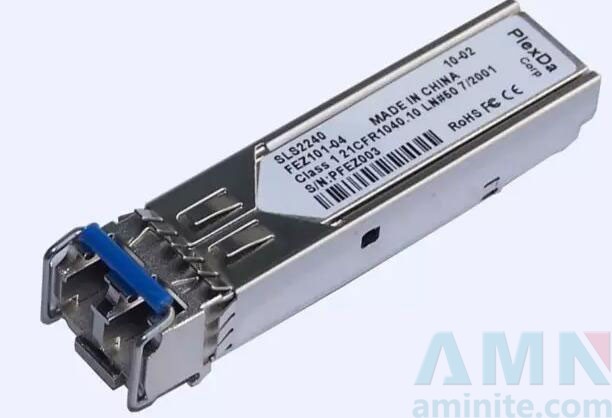
What is the SFP ?
SFP is the abbreviation of PLUGGABLE SMALL FORM, can be simply understood as an upgraded version of GBIC. Less than half of the volume SFP module GBIC module, can be in the same panel configuration more than double the number of ports. Other basic function modules of SFP and GBIC. Some switch vendors called SFP module for small GBIC (MINI-GBIC).
The future Optical module Must support hot swappable, i.e. without cutting off the power supply modules that can be connected or disconnected to the equipment, the optical module is hot pluggable, network Management personnel without shutting down the network can upgrade and expansion of the system, what impact on online users will not. Hot swappable also simplifies the overall maintenance work, and enables the end users to better manage their transceiver module. At the same time, due to the heat exchange performance, this module can help network administrators to upgrade network according to the requirements, the overall planning of transmission cost, link distance and all network topology, without the need to replace all the system board. The light module supports hot plug there are GBIC and SFP, because the SFP and SFF appearance of similar size, it can be directly inserted on the circuit board on the package is saved in time and space, and the application is very wide, therefore, it is worth looking forward to the future development, there may even threaten the SFF market.
What is the SFF?
SFF (Small Form Factor) small package Optical moduleUsing the advanced precision optics and integrated circuit process, only the size of common duplex SC (1X9) type Optical fiber Half of the optical transceiver module, the number of ports in the same space can be doubled, can increase the line port density, reduce the system cost per port. The SFF module uses a small package with copper wire network Allied KT The -RJ interface, and the size of the common computer network wire interface same to the existing network equipment with copper based transition to optical fiber network of higher rate to meet the rapid growth of network bandwidth demand.
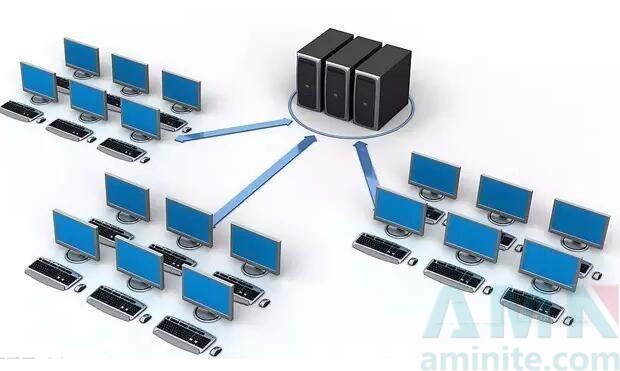
The network connection device interface type
BNC interface
BNC interface is a coaxial cable interface, BNC interface is used for connecting the 75 ohm coaxial cable, providing close (RX), (TX) two channels, which is used to connect the unbalanced signal.
The optical fiber interface
The optical fiber interface is the physical interface used to connect optical fiber cable. Usually there are SC, ST, LC, FC and other types. For the 10Base-F connection, the connector is usually ST type, the other end connected to the optical fiber FC step line frame. FC is the abbreviation of FerruleConnector, its external strengthening way is to use the metal sleeve, fastening methods for screw buckle. The ST interface is usually used for 10Base-F, SC interface is used to 100Base-FX and GBIC, LC are usually used SFP .
RJ-45 interface
The RJ-45 interface is Ethernet The most common interface, RJ-45 is a common name, refers to the IEC (60) 603-7 standard, using 8 position defined by the international standard connector (8 pin) modular jack or plug.
RS-232 interface
RS-232-C interface (also known as EIA RS-232-C) is the most commonly used as a serial communication interface. It is in 1970 by the American Electronics Association (EIA) combined with Baer system, modem manufacturer and computer terminal manufacturers jointly developed for serial communication standards. Its full name is" data Terminal equipment (DTE) and data Communication equipment (DCE) between the serial binary data interchange interface technology standard". The standard DB25 connector requires the use of a 25 foot, the signal content for each of the pin connector to be provided, but also a variety of signal regulated level.
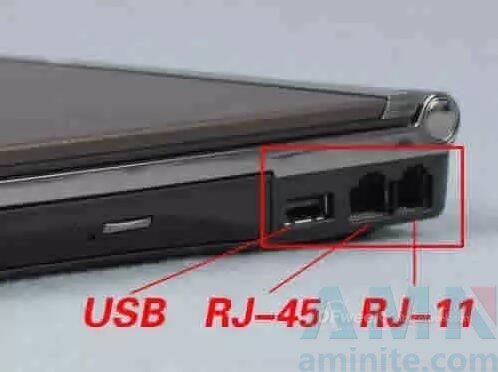
RJ-11 interface
The RJ-11 interface is what we usually call the telephone line interface. RJ-11 is used for the Western Electric Company (Western Electric) common name development connector. The shape is a connecting device definition 6 pin. Formerly known as WExW, where x said "active", or contact wire needle. For example, WE6W has all the 6 contacts, numbered 1 to 6, WE4W interface using only 4 needles, two contacts on the outside (1 and 6) without WE2W, only use the middle two pin (i.e. telephone line interface).
CWDM and DWDM
With the rapid growth of Internet IP data service, due to the increasing demand for bandwidth of transmission line. Although D WDM (DWDM) as a method of solving the circuit bandwidth expansion the most effective technology, but CWDM (CWDM) technology than DWDM has advantages in cost, maintainability etc..
CWDM and DWDM both belong to the WDM technology, can be different wavelength The light is coupled to the single core fiber to transmit.
Most of the new standard CWDM ITU G.695 1611nm, provided that the interval between the 18 wavelength channels from 1271nm to 20nm, considering the ordinary G.652 water peak fiber, generally using 16 channels. Because the large channel spacing so close to wave devices and lasers are cheaper than DWDM devices.
DWDM channel spacing is 0.4nm, according to 0.8nm, 1.6nm different interval, interval is smaller, the need for additional wavelength control devices based on DWDM technology, so the equipment compared with the high price of the device based on CWDM technology.
PIN Photoelectricity The diode is between P type and doping concentration in high N type semiconductor, a layer of lightly doped N materials, called I (Intrinsic, intrinsic layer). Because it is lightly doped, the electron concentration is very low, through diffusion form a wide depletion layer, which can improve the response speed and efficiency.
APD avalanche photodiode, it not only has the light / electricity conversion function, but also has internal amplification, the amplification effect is on the inside of the pipe to complete the avalanche multiplication effect. APD is a photodiode with gain, in the optical receiver sensitivity Required, using APD to extend the transmission distance of the system.


